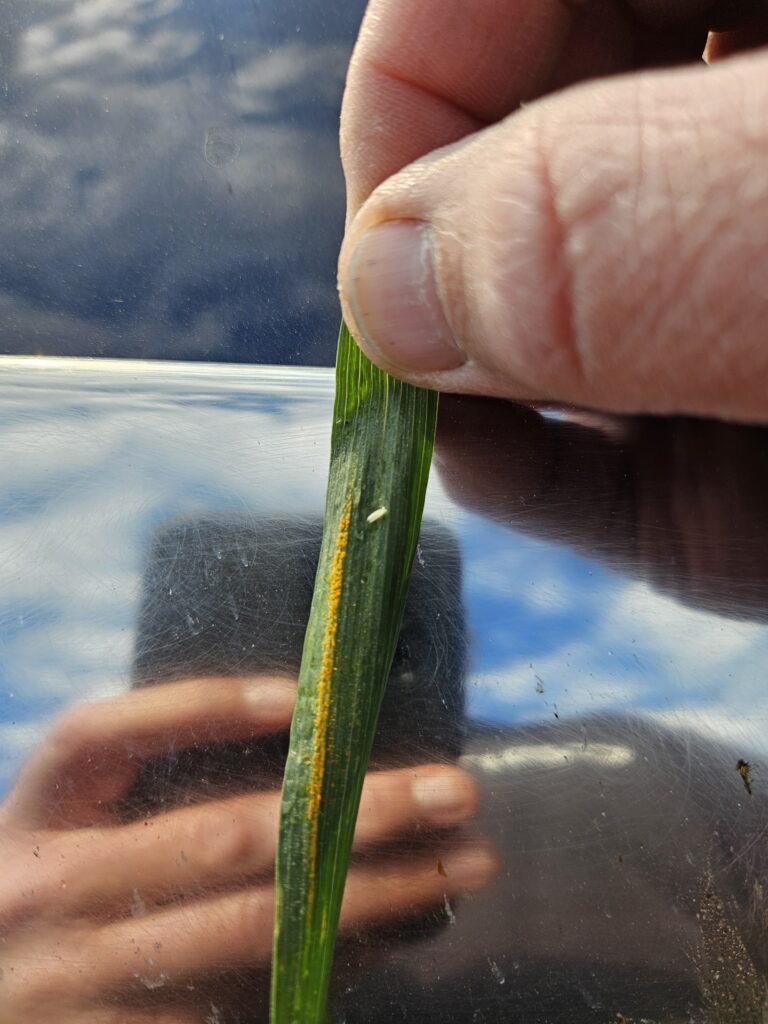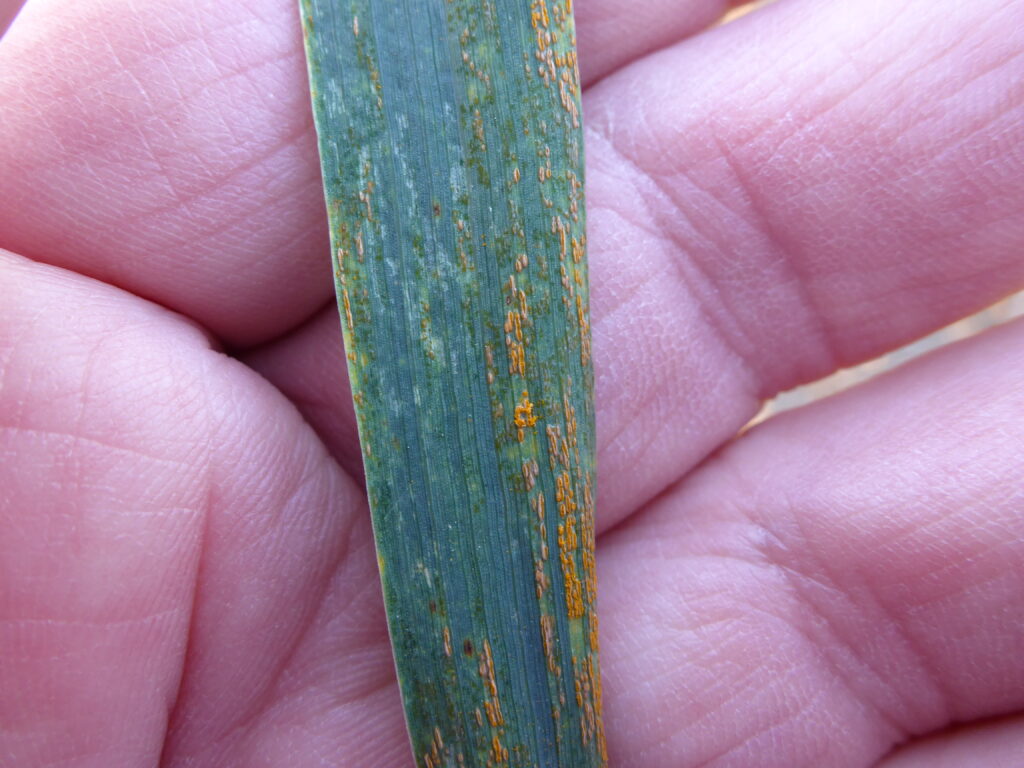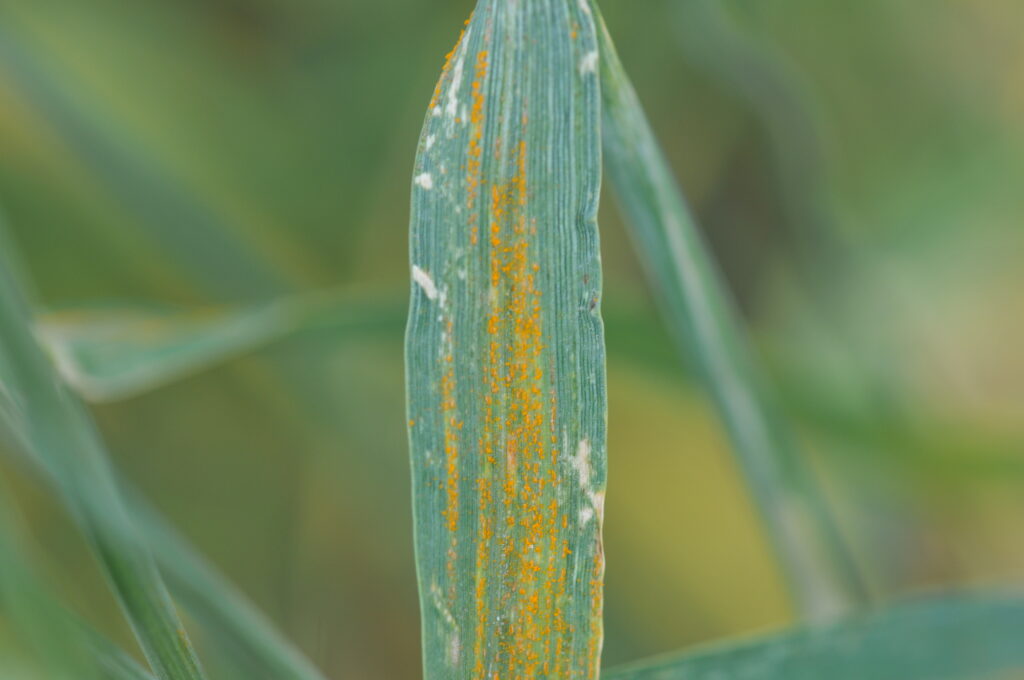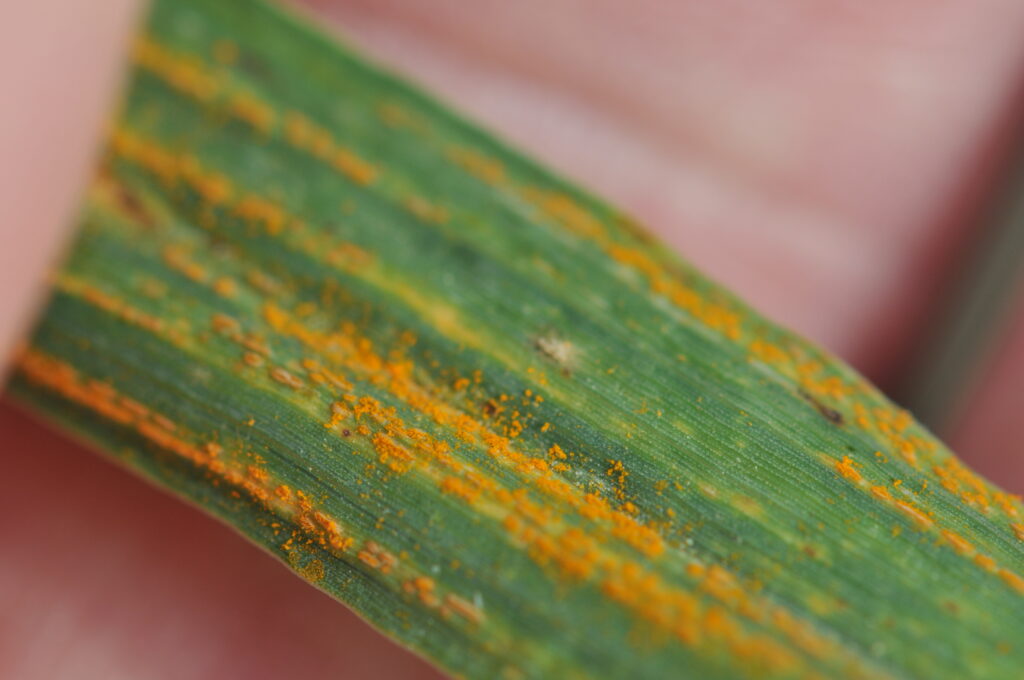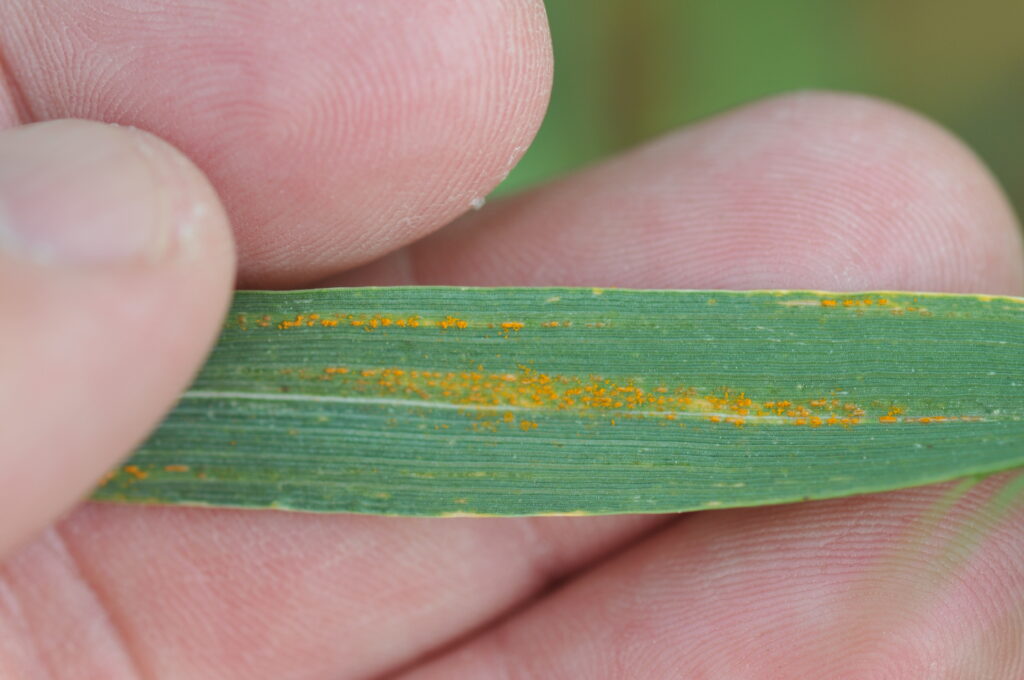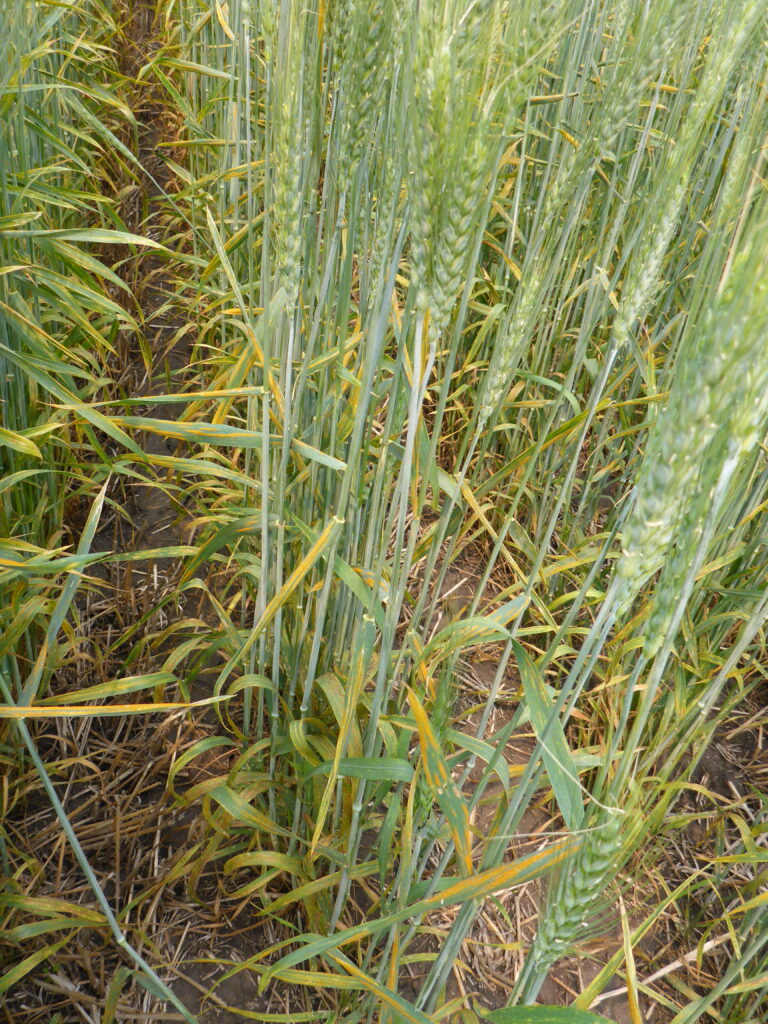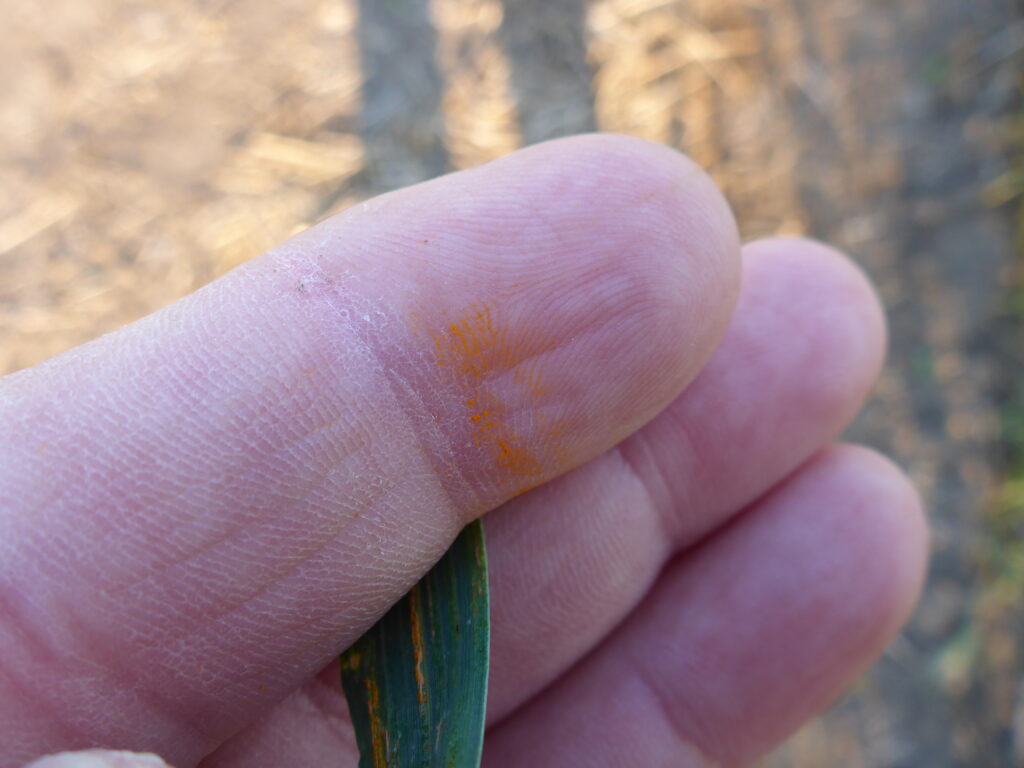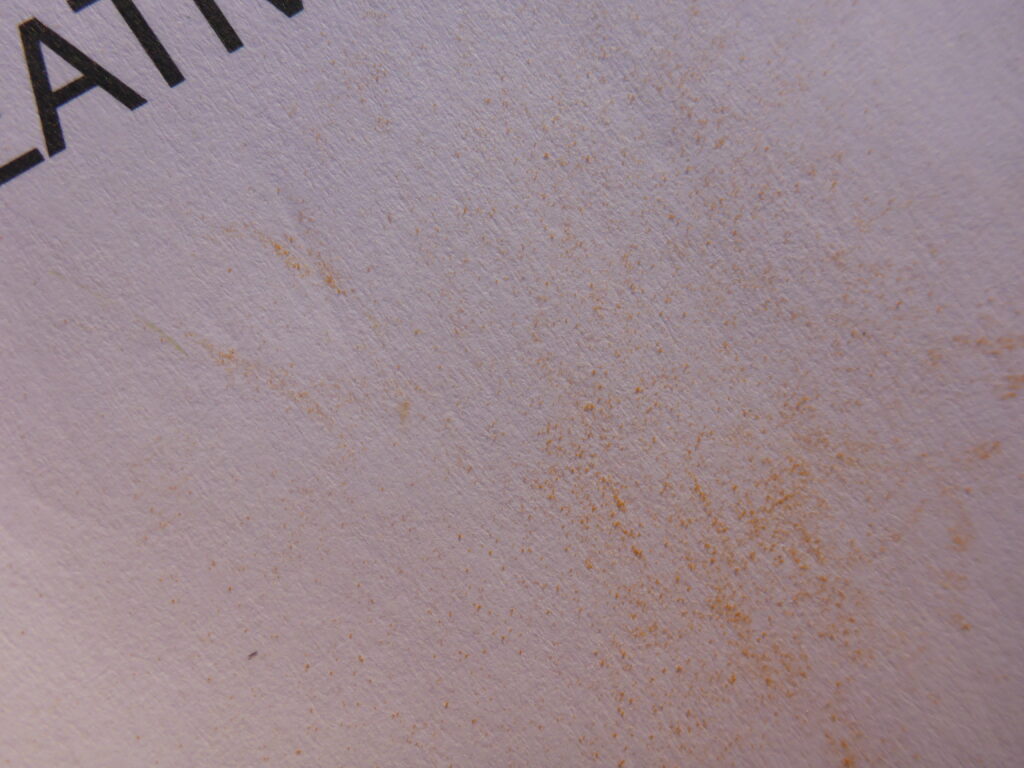The PCDMN has been contacted regarding another stripe rust report from a field of CDC Pilar wheat in Lacombe County. Steve Ramsay, PSI Farms, Red Deer County, contacted the PCDMN on July 12, 2024 to report the observation of low levels of stripe rust in a field of CDC Pilar wheat (photo below). This report is on top of reports earlier this week from Warner and Vulcan Counties.
As mentioned in a PCDMN post from mid-week there was also a report from the Swift Current region of stripe rust from natural infections. In addition, David Kaminski, Provincial Pathologist, Manitoba Agriculture in their most recent Manitoba Crop Pest Update (Issue 8 – July 11, 2024) has reported additional observations of stripe rust in more westerly areas of Manitoba. Note the PCDMN is also in the process of evaluating some other recent submissions to the PCDMN Quick Disease Reporter Tool (PCDMN QDRT) regarding additional cereal rust reports in Manitoba. Updates will be posted as needed.
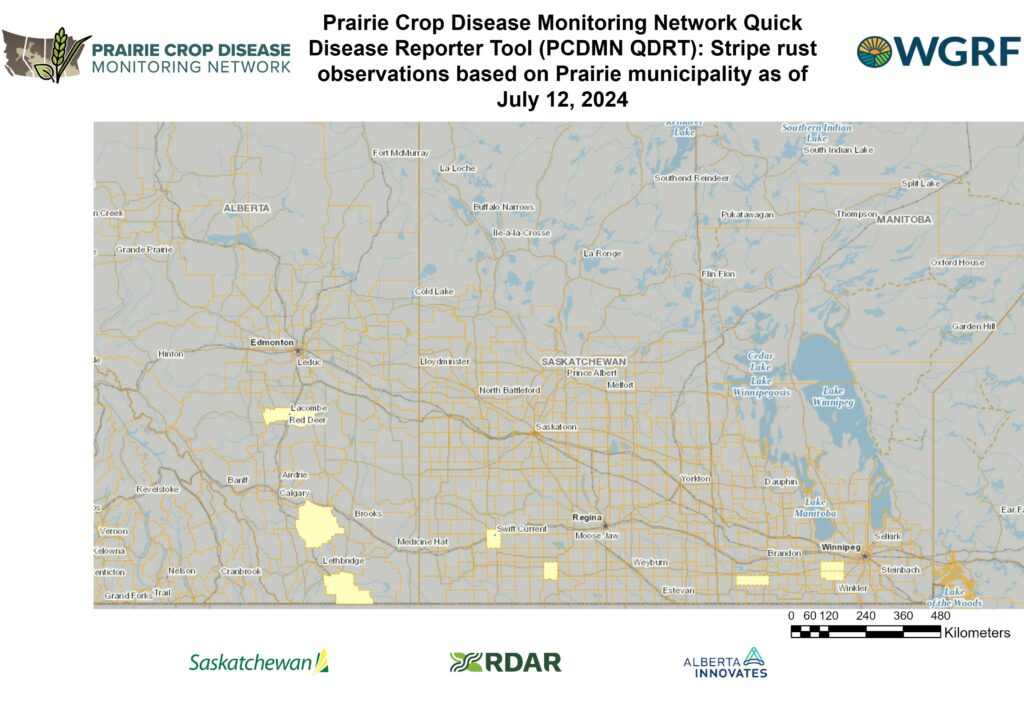
It is critical for timely scouting of wheat crops for early signs of stripe rust as it can rapidly develop to levels that may be difficult to manage with fungicide. See photos below for PCDMN examples of typical stripe rust symptoms. Early signs of stripe rust include narrow yellowish/orange pustules can be 1/4 to 1″ (1-3 cm) in length, while more mature pustules can be much longer. The yellowish/orange colouration is due to masses of stripe rust uredospores (asexual spores) erupting through the leaf epidermis from internal hyphae within the leaf tissue. The masses of spores may have a granular appearance and if you rub your finger along the pustules you will notice a yellowish/orange “dust” on your finger tips. This “dust” can also be rubbed off onto white paper. See photos below.
Once stripe rust appears in a Prairie wheat crop, further development is favoured by moist humid conditions and cool to moderate temperatures. Based on information from Dr. X. Chen, WSU, Pullman, Washington, fungicide application for stripe rust is recommended from the herbicide timing stage through to flowering when the % of plants infected or the area of leaf infection approaches 5%. Staying on top of an emerging stripe rust problem in your Prairie winter or spring wheat crop is critical as yield losses are greatly increased when the disease becomes established, especially before head emergence. NOTE: pay close attention to labels for fungicides especially post-head emergence options in relation to timing, pre-harvest intervals and maximum residue limits. Consult your provincial guides to crop protection for more information (AB Guide, SK Guide, MB Guide).
The PCDMN wishes to sincerely thank Steve Ramsay for his willingness to share this observation and accompanying picture regarding the appearance of stripe rust in central Alberta. Steve’s collaboration is key to having a successful Prairie-wide network regarding field crop diseases.
